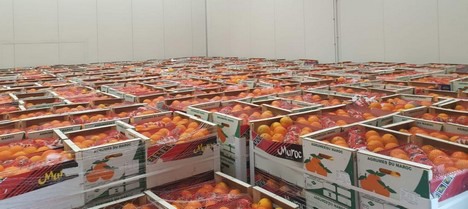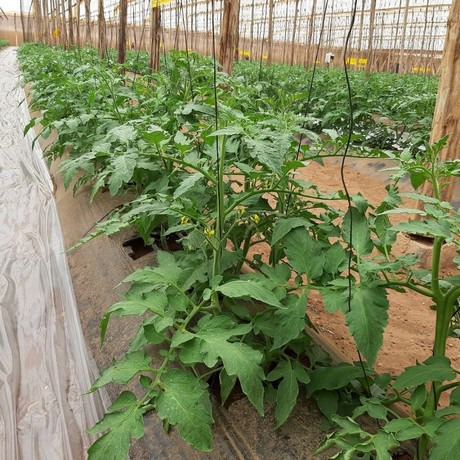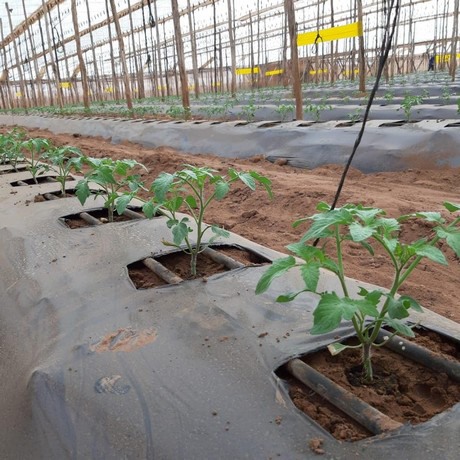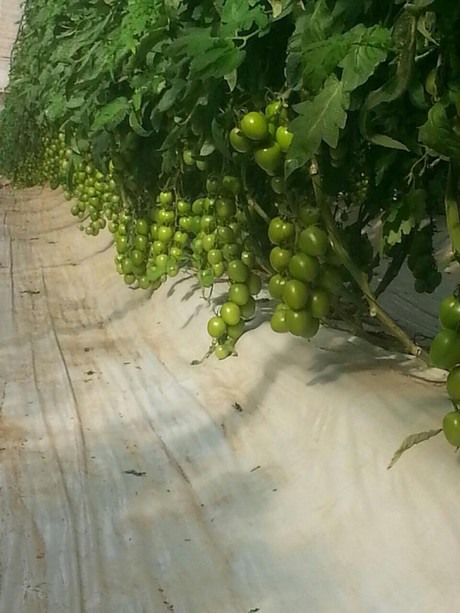In the winter, Spain traditionally supplies fruit and vegetables to the market in Europe. However, across the Strait of Gibraltar lies another major European market player.
Morocco has seen an increase in growers and fruit and vegetables in recent years. The European market’s proximity, as well as improved infrastructure, have contributed to this country’s improved market position. This growth, in especially citrus, has, however, slowed somewhat lately. With lower volumes, Morocco’s 2020 outlook is similar to that of Spain. Some traders are reportedly halving their harvests.
The Moroccan government stimulates the growth in fruit and vegetable acreage. According to that country’s Ministry of Agriculture, these products can compete with those from other countries. The plan is then also to convert grain fields to tree orchards, to increase the country export values. It is still unclear how the Moroccan government will adjust its strategy for the year.

Citrus
Jan van der Voort of the fruit and vegetable wholesaler, Anaco Greeve, expects fewer Moroccan mandarins on the Dutch market this year. “The prospects are not good,” says Jan. “There are already almost no more clementines on the market. This year, we have seen a decline in volume in the whole of Morocco too."
"Berkane in the north has about 20 to 25% less, Beni Mellal, 30% less, and in the Agadir, there is a reduction of around 70% when it comes to mandarins. The situation is, therefore, comparable to what is currently happening in Spain, only a little worse. The mandarins’ quality is, however, better than last year.”
“This shortage is mainly due to last year’s record crop. The trees are exhausted at the moment and are, therefore, producing fewer blossoms. The citrus trees also suffered under the heat during the blooming phase, which caused a lot of the flowers to die," explains Jan.

"This was not only the case with mandarins in Morroco but also with oranges such as navels and salustianas. However, not with nadorcotts. There, we expect this year’s volume to be similar to that of last season. The first nadorcotts should have arrived on the European market in the first week of the new year.”
“This year can actually not be compared to the previous season,” says Van der Voort. “Last year, both Spain and Morocco had high volumes with occasional quality problems. This year, both these countries have far lower volumes, but the citrus’ quality is better. Spain and Morocco can, therefore, compete well with each other on the market. The Moroccan product is slightly less expensive but not by much."
"Both these countries also have strong brands on the market. The main problem this year is the demand in the Netherlands. There is a lower demand for mandarins. Even the week around Sinterklaas was rubbish for mandarin sales.” Perhaps this saint should go back to putting more mandarins in children’s’ shoes rather than chocolate letters and other traditional Dutch treats.

The acreage in Morocco has increased steadily in recent years, but Jan has noticed that this expansion has slowed of late. “For the last two years, the seasons have not been very good anymore. The farmers, therefore, stopped expanding a while ago; however, in the coming years, there will be an increased production as the young trees bear more fruit. But I do not see switching happening any time soon. They do change between varieties within the citrus cultivation but not to other products.”
Vegetables
All kinds of citrus and different melon varieties, bell peppers, courgettes, French and dwarf beans, and, above all, a lot of locally-grown tomatoes. That is the fruit and vegetable package Robbert de Mie of Vegimex imports from Morocco. “It has developed into this because of the good connections we have in that country,” says Robbert.

Produce of tomatoes in Marocco by Vergimex
This importer from Poeldijk in the Netherlands sees good volumes coming from that country. “In contrast to Spain, we had no storms in Morocco. The volumes are similar to those of last year. It is only the citrus quality from Agadir that is lagging behind that of the rest of the country. For example, the Valencias sustained peel damage, although this does not affect their flavor. It is also going well with Moroccan vegetables this year, even though the nights are getting colder now.”
The Moroccan Valencia season has come to an end for Robbert. “We imported between 20 and 25 containers per day this season. It is, however, difficult to compete on the European market once the Spanish season starts. Clients then still tend to prefer mandarins from Spain. With citrus, we will now switch to Navelinas again.”
Morrocan citrus has to contend with fierce Spanish competition and is also lagging when it comes to South African products. Regarding tomatoes and other vegetables, Robert has, however. observed growth in the European market. “We see an increasing demand from our clients for Moroccan products," says Robbert.
"These are slightly cheaper than the Spanish ones that are on the market. But it is not merely about the price. The quality of products from Morocco is getting better and better, and they are becoming more popular too. For example, we have clients in Germany who specifically ask for Moroccan tomatoes.”

The hub for Moroccan fruit and vegetable farming lies in the Agadir region. “We have many of our own fields in the areas surrounding this port city, and we get most of our products from there. A large shipping company has added Agadir to its Africa-Europe shipping route. That means there is now a direct service between the Port of Antwerp, which makes it even easier for us to import goods across the sea.”
Unlike importers of Spanish products, importers of Moroccan products have to deal with import tariffs and a quota. “A packing station may only export a certain volume,” explains De Mie. “If you exceed that volume, you have to pay import duties. These have decreased this year, but I still sometimes have to pay about €700 in import fees for one container."

"The cost price then climbs quickly for us. I understand that import duties have to be paid. The thing that makes it difficult is that we often pay too much for our products. In Brussels, the daily values of, for instance, our tomatoes are determined."
"In any given week, this could be set at €1,10/kg. That brings the price to €6,60 per crate of tomatoes, while we sell these for between €4 and €4,50 at market. These daily values, therefore, do not correspond to the products’ real market value. In my opinion, the powers that be in Brussels do not really know how our market works,” concludes Robbert.
